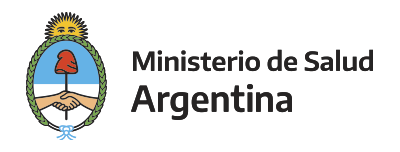Please use this identifier to cite or link to this item:
http://sgc.anlis.gob.ar/handle/123456789/2673| DC Field | Value | Language |
|---|---|---|
| dc.contributor.author | Fleitas, Pedro Emanuel | es |
| dc.contributor.author | Floridia Yapur, Noelia | es |
| dc.contributor.author | Nieves, Elvia | es |
| dc.contributor.author | Echazú, Adriana | es |
| dc.contributor.author | Vargas, Paola | es |
| dc.contributor.author | Caro, Nicolas | es |
| dc.contributor.author | Aveldaño, Ramiro | es |
| dc.contributor.author | Lopez, Walter | es |
| dc.contributor.author | Fernandez, Mariana | es |
| dc.contributor.author | Crudo, Favio | es |
| dc.contributor.author | Cimino, Rubén Oscar | es |
| dc.contributor.author | Krolewiecki, Alejandro J. | es |
| dc.date.accessioned | 2025-08-25T15:25:30Z | - |
| dc.date.available | 2025-08-25T15:25:30Z | - |
| dc.date.issued | 2022-02-04 | - |
| dc.identifier.uri | http://sgc.anlis.gob.ar/handle/123456789/2673 | - |
| dc.description.abstract | Background Strongyloidiasis and Chagas disease are endemic in northern Argentina. In this study we evaluate the association between S. stercoralis and T. cruzi infections in villages with diverse prevalence levels for these parasites. Further understanding in the relationship between these Neglected Tropical Diseases of South America is relevant for the design of integrated control measures as well as exploring potential biologic interactions. Methodology Community based cross-sectional studies were carried in different villages of the Chaco and Yungas regions in Argentina. Individuals were diagnosed by serology for S. stercoralis and T. cruzi. The association between S. stercoralis and T. cruzi, and between anemia and the two parasites was evaluated using two approaches: marginal (Ma) and multilevel regression (Mu). Results A total of 706 individuals from six villages of northern Argentina were included. A total of 37% were positive for S. stercoralis, 14% were positive for T. cruzi and 5% were positive for both. No association was found between infection with S. stercoralis and T. cruzi in any of the models, but we found a negative correlation between the prevalence of these species in the different villages (r = -0.91). Adults (> 15 years) presented association with S. stercoralis (Ma OR = 2.72; Mu OR = 2.84) and T. cruzi (Ma OR = 5.12; Mu OR = 5.48). Also, 12% and | es |
| dc.language.iso | en_US | es |
| dc.relation | Fundacion Mundo Sano | es |
| dc.title | Strongyloides stercoralis and Trypanosoma cruzi coinfections in a highly endemic area in Argentina | es |
| dc.type | Artículo | es |
| dc.identifier.doi | 10.1371/journal.pntd.0010179 | - |
| item.fulltext | With Fulltext | - |
| item.openairetype | Artículo | - |
| item.languageiso639-1 | en_US | - |
| item.cerifentitytype | Publications | - |
| item.openairecristype | http://purl.org/coar/resource_type/c_18cf | - |
| item.grantfulltext | open | - |
| Appears in Collections: | Parasitosis intestinales en Argentina | |
Files in This Item:
| File | Description | Size | Format | |
|---|---|---|---|---|
| 16. PLoS Negl Trop Dis 16(2), e0010179, 2022.pdf | 825.56 kB | Adobe PDF | View/Open |
Page view(s)
143
checked on Oct 21, 2025
Download(s)
7
checked on Oct 21, 2025
Google ScholarTM
Check
Altmetric
Altmetric
Items in DSpace are protected by copyright, with all rights reserved, unless otherwise indicated.

